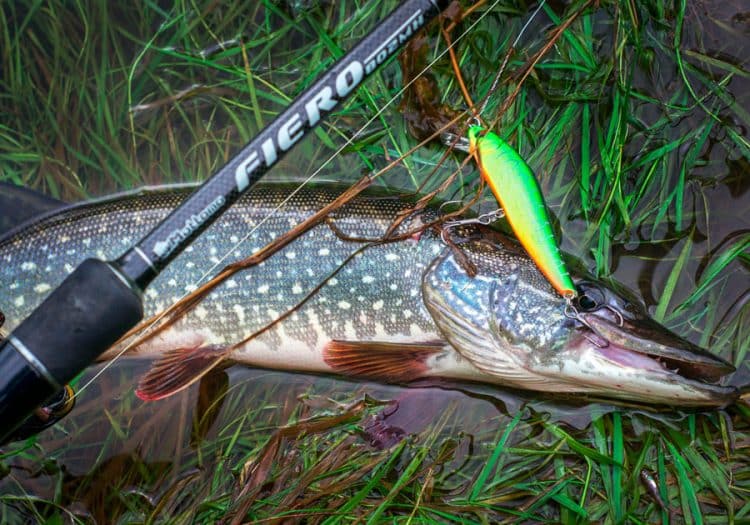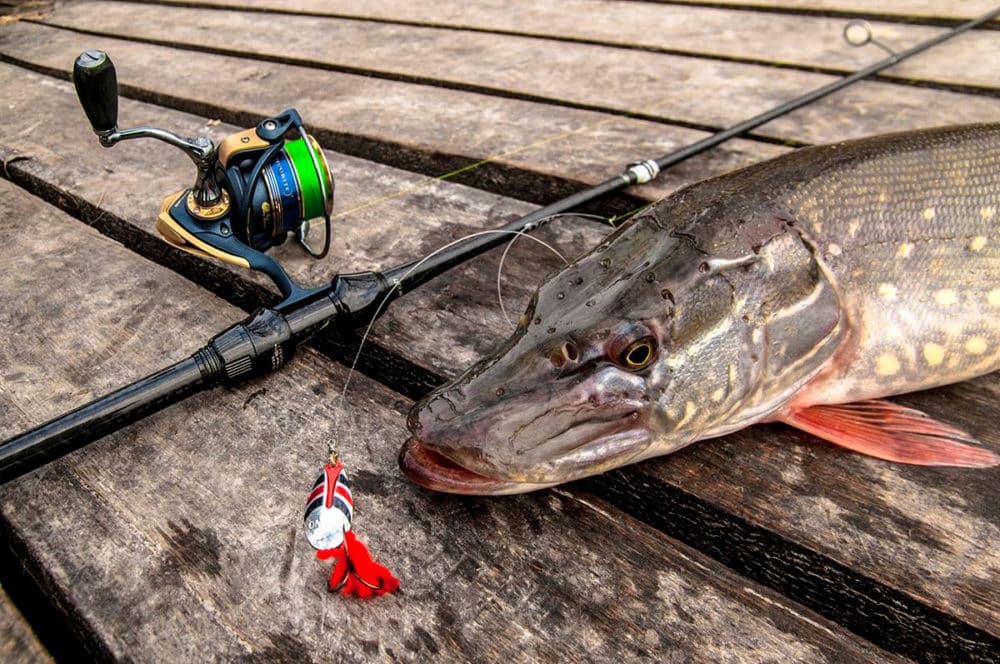Tokyo rig (Tokyo rig in foreign literature, “chupa-chups” rig from domestic fishermen) is a “made in Japan” rig, gradually gaining some attention from such jig types of mounting as jig-rig and Tyrolean stick. The Tokyo rig rig has its own characteristics and types of installation, its optimal conditions for fishing and its own set of predators preferring it. Let’s talk about this, using the practical experience of foreign and domestic spinningists.
- What is fishing equipment “chupa chups”
- Installation of the “chupa chups” equipment yourself – several ways with photos and videos
- The first is on a soft wire for a rocky and clean muddy bottom
- “Incorrect installation” chupa-chups
- The third equipment option is for a grassy bottom
- Where and in what conditions the equipment is used, its advantages
- Methods for catching perch, pike and zander in tokyo rig
- Bait
- Spinning tackle for fishing on “Chupa Chups”
- Поделиться ссылкой:
What is fishing equipment “chupa chups”
Japanese toki-rig fishing equipment was originally intended for bass fishing, but, like many other Japanese equipment, it has successfully migrated to our area. It is a jig installation of silicone bait on a wire yoke with a weight-bullet, Tyrolean stick, olive. Unlike conventional jig cuts, it goes some distance from the bottom, which predetermines its advantages and application format.
Installation of the “chupa chups” equipment yourself – several ways with photos and videos
In view of the fact that the market of the Russian Federation and the CIS is still quite poor in ready-made assemblies of Tokyo rig, it is advisable for experimental spinningists to be able to make equipment with their own hands.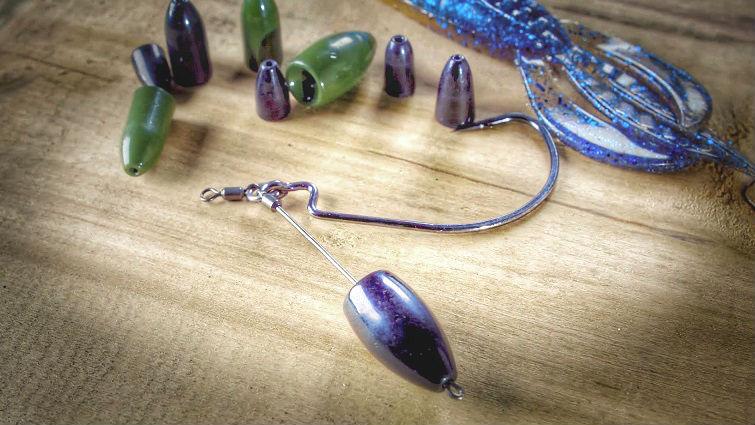
- Wire stiff base or thick, but more pliable string under load . The wire version is used for grassy and clay bottom, on a string for rocky ridges, which makes it possible to straighten the end of the string rocker with hooks and, having lost only the weight, release the bait. Wire thickness from 0.5 to 0.8 mm is the most common wire thickness. The length of the wire is selected empirically, based on the required depth, the required separation from the side, as well as other fishing conditions.
- Bullet weights (olives, tyrols, etc. ) are lead or tungsten of different weights – the most common 4-15 grams. Tungsten bullets knock better when used in pairs, but this is not always necessary, and they cost immeasurably more.
- Hooks are often offset, but single hooks with a wide ear, like those used when fishing with Cheburashka, are also possible.
- Swivels, clockwork rings . Connecting fittings. There is no way without it, blind rigging – when the wire is knitted directly to the hook, it loses many of its advantages.
From the tool, you will need nippers and round-nose pliers. There are three main options for making lollipop fishing rigs and several variations on the theme.
The first is on a soft wire for a rocky and clean muddy bottom
Purchased special wire with swivels at the end is used. A soft wire with a diameter of 0.5-0.7 mm is required. The creation of such a variant of the Tokyo rig rig is clearly visible in the photo: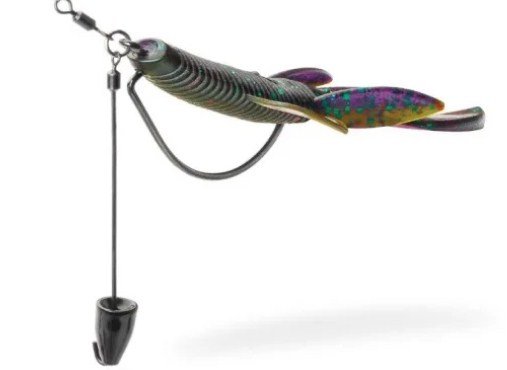
- We take a purchased soft wire with a swivel, or we fasten the swivel with round-nose pliers at the end of the future axle, also made of soft material (for example, a string of large numbers, or a wire for beekeepers).
- We put on the bullet point down.
- We leave the required length (it is good to have several different sizes of axes from 5 to 15 cm, the most common length is 6-10 cm).
- Bite off the excess.
- We bend the wire at the end 90 degrees, but do not round the bullet hole inward.
- Into the winding ring with a diameter of up to 0.6-0.8 cm (depending on the size of all components, the main thing is that everything inside the ring moves freely) we put all the components of the future rig – the bait on the offset hook, the main swivel that goes to the cord and the swivel from the axle.
- Everything.
This option clings more to the grass, but it sticks better into the muddy bottom, does not fall on its side. This allows you to use this type of rig, animating the bait in almost one place. Also, a thinner axle is easier to unbend, the wire straightens under load, if, nevertheless, the hook occurred on a rocky bottom. On a hard bottom, as well as when fishing at great depths, a rig with two “butt-to-butt” bullets is used, between which the grain is squeezed. This stacked wiring creates a lot of wiring noise. It is especially interesting to use this option when fishing for near-bottom pike perch. More details in the video material: https://youtu.be/svsLS3FlXK0
“Incorrect installation” chupa-chups
In the case of a rocky bottom, but clean from grass, you can also use the rig option, which we generally do not recommend, but it is acceptable for this case (the photo clearly shows how it is produced): 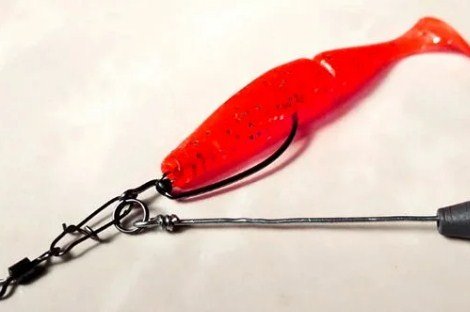
. In this case, there is a plus, – the bait, as well as the load can be changed within one minute. But! This option, unlike the previous one, collects grass on a carabiner, which interferes with comfortable and effective fishing. Briefly stages:
- the bait is attached to an offset hook and inserted into a carabiner;
- on the other blind side of the carabiner, a swivel is attached to the cord;
- a wire with a bullet is attached through a ring to the opening side of the carabiner.
The third equipment option is for a grassy bottom
It is made on a harder wire than for a rocky ridge. Since “tenderness” in this case is useless. Diameter 0.8-0.9 mm. Both commercial wires with swivels at the end and the version with two swivels and wire can be used.
- A purchased wire is taken with a poured swivel (or with a self-attached one). Diameter 0.8-0.9 mm.
- It is not her that the bullet is put on with the point to the swivel.
- A bead is put on, which just fits into the groove of the bullet.
- The wire is bent tightly with round-nose pliers so that the weight does not sleep.
- This Tokyo rig rig installation is intended for areas with a lot of aquatic vegetation.
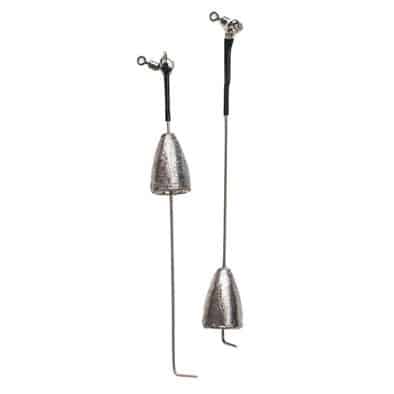
The use of extra components such as carbines, extra winding rings and swivels is not necessary. This will only make the rig heavier and make it more hooked on grass and other underwater obstacles. This is especially true when using a lollipop on a grassy bottom.
Interestingly, on a muddy bottom, a good result is also obtained by flipping the bullet with its back wide side to the bottom. This gives extra seconds for the bait to hover over the bottom, without falling into the glue. If fishing for chupa chups is just going on a rocky bottom, then it is better to use the standard direct mounting of Tokyo Riga.
In addition to the cheapness and availability of self-made bait to a wide range of spinning anglers, this approach has the advantage that the angler has the opportunity to choose any length, material and thickness of the wire, as well as the weight and shape of the sinker and the method of its attachment. This greatly increases the variety and capabilities of the spinning rod.
A visual tutorial on how to make a DIY tokyo rig fishing rig on video: https://youtu.be/IXCJXHUN3zQ
Where and in what conditions the equipment is used, its advantages
The Tokyo rig rig is used when fishing on a muddy and littered
bottom with small debris , when the use of conventional jig heads or articulated mounting is not appropriate, or less profitable from a practical point of view. Also, the tokyo rig feels good among fine gravel and stones at the bottom, but it is fine dispersed, not cobblestones, in the latter case, massive breaks of the rig cannot be avoided. Another fiefdom is the bottom overgrown with small grass (especially if a reservoir with constant changes in depths), where it is impossible or difficult to conduct a regular jig with high quality, as well as using a
pelagic jig . Thus, Tokyo Rig has the following advantages over other main types of silicone bait fishing mountings:
- The jig rig goes to the very bottom and collects all the debris that comes its way directly to the bait. On the chupa-chups, the grass is based only in the area of the weight, while not affecting the operation of the bait in any way. It should also be borne in mind that due to the presence of a rigid axis, the lure on the Tokyo rig is held in a more natural position, compared to the jigrig. You can use the largest weights in a set even with small baits (if necessary, for example, catching medium-sized pike perch, but at great depths), since the load and silicone can be spread over a long distance so as not to confuse the predator and provoke him to attack …
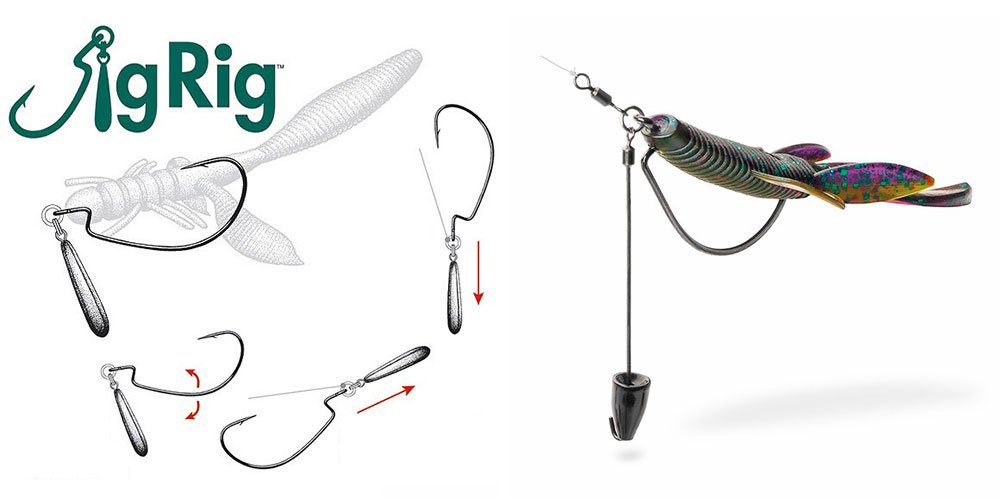
- The jig head and eared weight also collect all the garbage, plus they are not so convenient in operation – the Tokyo rig allows you to almost instantly change the weight of the load, the working depth of the bait above the bottom and the bait itself.
- Due to its softness, the diverter lead is often confused, for this reason the active working phase of the wiring is lost.
The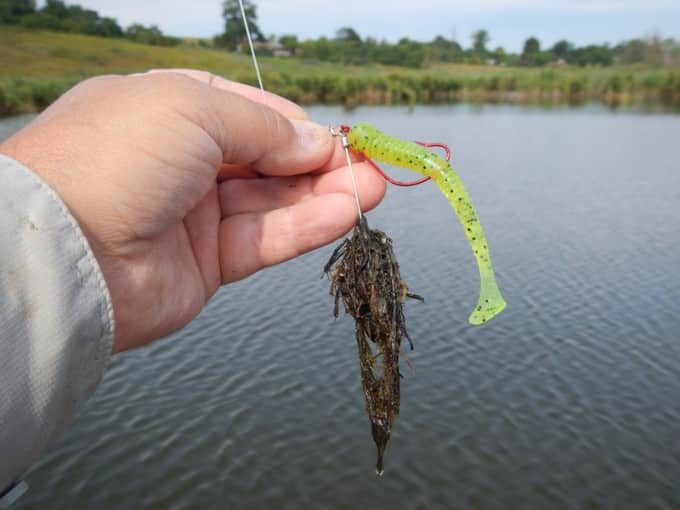
Methods for catching perch, pike and zander in tokyo rig
In general, the tactics of catching these predators with the lollipop rig is no different. The size of the baits, the weight of the load and the parking space differ. So, for perch, the weight of the load is most often up to 8 grams, and for pike and pike perch from 6 to 20-25 grams. The size of the lures is up to 2-3 and 4-5 inches, respectively. When fishing on a grassy muddy bottom, as mentioned above, an inverted tokiorig should be used. The posting is monotonous with slight tremors of the rod along the perch. For pike and pike perch, you can also use a short lazy step with the rise of a light turbidity, a cloud of which forms when hitting the bottom. If fishing is on the most passive predator (perch, pike perch, pike), then you can use the Tokyo-rig rig according to the first option for a clean muddy bottom. The animation is a lazy quivering avalanche of small pokes at the very bottom with short stretches and significant pauses.Posting a tokyo rig to a pike perch standing at a rocky bottom often resembles a step, or a wave-like animation, but with the only difference that the bait goes at some distance from the bottom surface. Features of catching zander in Tokyo-rig: https://youtu.be/KS16PGwBpmc
Bait
Lures for Tokyo rig are used in a variety of ways, the same as when fishing with a regular jig. Worms, slugs, krakozyabry, twisters and rippers. The size is selected according to the size of the sinker, fishing depth and the size of the intended predator. Another “tasty” video from a foreign professional fisherman: https://youtu.be/6EAmFFtT_ak
Spinning tackle for fishing on “Chupa Chups”
There are no special requirements for spinning when fishing on a Tokyo rig. All those that are used for fishing with regular jig lures. A clear and sensitive form, according to the test we start from the weight of the baits. Most often it is 3-15, 5-21 grams. Length in the region of 2.1-2.6 meters. A high-quality reel 2000-2500 according to Shimano, on the spool there is a cord and only a cord, since you need maximum responsiveness to all actions of the angler and feedback from the bait to animation, from touching underwater objects and the bottom, biting fish. Finally, it should be noted that it is on the shell rock, small stone, muddy, overgrown with mud and small grass bottom Tokyo rig shows the best results. For a reservoir heavily overgrown with vegetation, it is better to use surface baits, or various non-hooks. Each bait, as well as each installation option, has its own time and its own hour,and the task of the spinning player is to correctly fold all the cubes into a pyramid in order to turn his theoretical knowledge into practical success.


